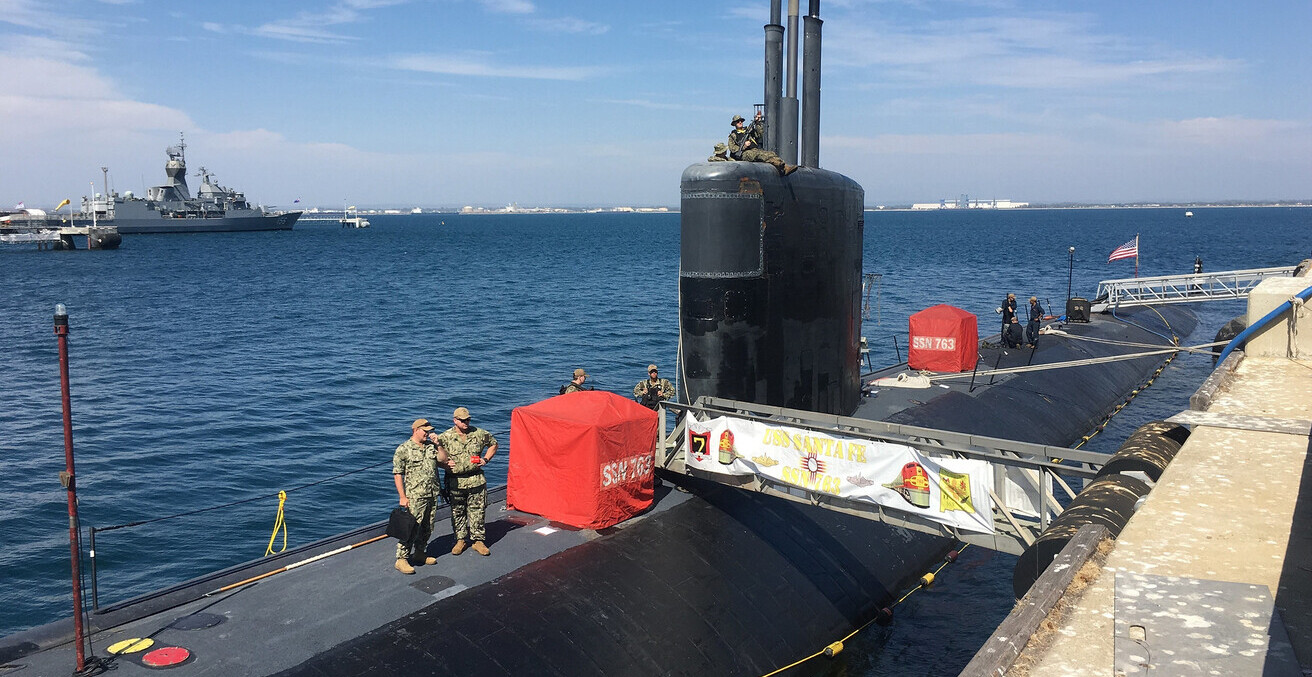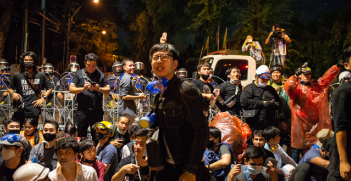Maritime Cooperation in the Indian Ocean

The Indian Ocean is increasingly important for Australia’s maritime security. Through a range of diplomatic and economic measures, Canberra is seeking to expand its influence westward.
Last week, Australian Prime Minister Scott Morrison announced that a new submarine base will be built in either Brisbane, Newcastle, or Port Kembla on Australia’s east coast. This came after Defence Minister Peter Dutton revealed that design and construction plans for the at least eight new nuclear-powered submarines to be acquired under the AUKUS deal with the United States and the United Kingdom could be announced months before schedule.
The six Collins-class submarines that currently comprise the Australian fleet are based at HMAS Stirling, south of Perth and on the Indian Ocean. The announcement of an east coast base appears to undermine a central rationale of Australia’s move to the “Indo-Pacific” concept of its regional neighbourhood.
For too long Australia looked north and east, not west and south, when thinking about its strategic geography. The Indo-Pacific concept has emerged from the rising importance of the maritime as a strategic domain of great power competition while also reflecting Australia’s unique liminal geography as a vast continent occupying a southern middle ground between the Pacific and Indian Oceans. The concept presented an opportunity to incorporate the Indian Ocean into Australia’s foreign and defence policy planning. Indeed, a recent University of Western Australia Defence and Security Institute report argues that the Australian government needs a new force posture review, one focused on defending its extensive northwest coast and proximal maritime area. And as David Brewster argues, while Australia’s 2020 defence strategic update identified the northeast Indian Ocean as a priority area, “it’s also where our security relationships are the least developed”. The announcements raise concerns that government decision-making is being driven less by strategic imperatives and more by leveraging capability in anticipation of an upcoming federal “khaki” election. Yet for sceptics, this announcement may also reinforce questions about whether the Indian Ocean Region could or would be prioritised by Australian government’s similarly to East Asia or the Pacific Islands.
Australia is an important Indian Ocean state, with the the region’s longest Indian Ocean coastline and largest Search and Rescue Zone. It is home to lucrative offshore hydrocarbon reserves — over 50 percent of Australia’s sea-borne exports leave Indian Ocean ports and approximately half of Australia’s naval fleet is located on the Indian Ocean coast. The Indian Ocean is also home to Australian offshore territories. The Heard Island and McDonald Islands in the Southern Indian Ocean, for example, are located over 4000 km southwest of Perth, which gives a sense of the sheer scale of the ocean area in which Australia has national interests.
Other Indian Ocean Territories such as Cocos (Keeling) Islands are increasing viewed by policymakers as possessing the potential for defence cooperation with regional allies, including for maritime patrolling and surveillance to combat threats such as illegal fishing.
The Indian Ocean region is also home to important partners for Australia, including India and Indonesia. Enhancing maritime security cooperation in the Indian Ocean region provides Australia with an opportunity to deepen its relationships with those crucial regional partners.
Australia has made recent efforts to deepen regional maritime security cooperation, largely by focusing on ‘blue crime’ challenges such as terrorism, illegal, unreported and unregulated (IUU) fishing, and human trafficking at sea. Environmental threats are also at the top of the maritime security agenda for the Indian Ocean, particularly as a recently released Intergovernmental Panel on Climate Change (IPCC) report found the Indian Ocean to be warming more quickly than other oceans. Climate change and rising sea levels present significant challenges to the habitability of island states and an increased likelihood that regional states will need to respond more frequently to natural disasters. The importance of search and rescue cooperation was highlighted by the high-profile search for the Malaysian Airlines MH370 aircraft in 2014 in the Indian Ocean. Finally, issues of humanitarian assistance and disaster relief are not limited to natural disasters as manmade disasters, such as the displacement of Rohingyas from the Rakhine province in Myanmar, create human security challenges in the Indian Ocean region.
Australia engages with key regional forums, such as the Indian Ocean Rim Association and the Indian Ocean Naval Symposium (IONS). While IORA struggles to be an effective vehicle for enhancing regionalism in this part of the world, it is important that Australia is visible as an Indian Ocean state.. Part of the challenge is that the Indian Ocean is ‘complex, diverse, dynamic, and fragmented’ and difficult to conceive of as an integrated region of states with a unified or collective sense of purpose.
Consequently, Australia has sought to engage with diverse forms of regional dialogue and cooperation, including bilateral, trilateral, and minilateral arrangements. For instance, Australia has engaged in the India-Australia-Indonesia and India-France-Australia trilateral dialogues, the latter of which in 2021 discussed working together to support a “rules-based maritime order.” Australia has sought to strengthen bilateral ties with India, including through joint membership in the renewed Quad with the US and Japan, which — although not explicitly linked — engages in maritime security cooperation through the Malabar naval exercises, including those in the Bay of Bengal in 2021 and 2022. Australia and India have also committed funds to enhance maritime security cooperation through the Indo-Pacific Oceans Initiative (IPOI) — announced by Indian Prime Minister Narendra Modi at the 2019 East Asia Summit — in areas such as maritime ecology and mitigating marine pollutions, like plastics. These soft maritime security issues are sometimes viewed as “low-hanging fruit,” that is, the areas that states may cooperate on without entering into choppy political waters.
It is also clear that Australia needs to collaborate more closely with Indian Ocean partners beyond India, including Sri Lanka and Bangladesh. To this end, Australia recently announced a $36.5 million package over five years to improve regional cooperation on maritime shipping, disaster resilience and information sharing in the North East Indian Ocean, and the opening of a new high commission in the Maldives. Maritime security cooperation in the Indian Ocean reflects broader regional trends on states focusing on smaller “minilateral” groupings that sit in the space between bilateralism and multilateralism in order to advance their national security interests in the maritime domain.
Dr Bec Strating is the Director of La Trobe Asia and an Associate Professor in Politics and International Relations at La Trobe University.
This article is published under a Creative Commons License and may be republished with attribution.





